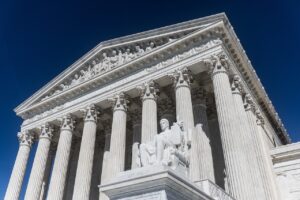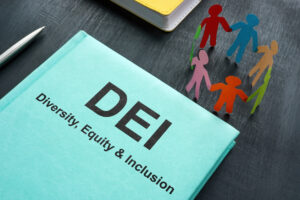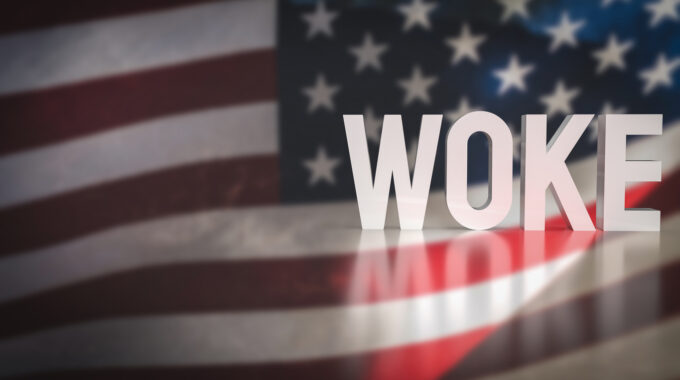Myth: Trickle Down Economics Works Since the days of Ronald Reagan, many have promoted the…

Safeguarding DEI Post Affirmative Action
DEI Under Attack
 America First Legal, led by Stephen Miller (a former senior white house policy advisor) and Edward Blums’ American Alliance for Equal Rights would have the Nation believe that diversity, equity and inclusion (DEI) efforts are synonymous with discrimination and must be stopped.
America First Legal, led by Stephen Miller (a former senior white house policy advisor) and Edward Blums’ American Alliance for Equal Rights would have the Nation believe that diversity, equity and inclusion (DEI) efforts are synonymous with discrimination and must be stopped.
Galvanized by Students for Fair Admissions, Inc. v. President and Fellows of Harvard College (SFFA), The SCOTUS affirmative action ruling in June 2023, Miller asserts that “all DEI programs” are now “illegal,” on the grounds of “reverse discrimination,” a 1970s born counterargument to 1960s-era civil rights laws.
Attorneys General of 13 states sent a letter to the Fortune 100 companies explicitly directing executives to avoid the use of racial preferences in corporate hiring practices. “If your company previously resorted to racial preferences or naked quotas to offset its bigotry, that discriminatory path is now definitively closed,” the letter states. “Your company must overcome its underlying bias and treat all employees, all applicants, and all contractors equally, without regard for race.” The seven-page decree closes with a warning promising executives that they’ll be held accountable if they discriminate based on skin color. The language is ambiguous, ultimately obliging companies to abandon all of their racial equity programs and race-conscious policies.
So, what is Reverse Discrimination and how does it fit within a conversation about DEI in hiring and employment practices? Do the SCOTUS decision and Attorneys General letter signal changing tides beyond the realm of higher education? The decision is causing ripples that may build into waves. But as it stands the ruling is restricted to education. Even so, activist groups, conservative advocacy organizations and individuals are making ground on challenging the legality of diversity programs in the workplace.
Understanding Reverse Discrimination
Reverse discrimination suggests the alleged unfair treatment of individuals from majority groups in favor of minority groups. This concept is an old one recently fueled by claims that DEI initiatives, intended to rectify historical inequities, may inadvertently lead to discrimination against majority individuals.
Activist groups like American Alliance for Equal Rights —the same organization that brought suit against Harvard and the University of North Carolina in the SFFA decision— have created quite a stir aggressively challenging diversity initiatives of private employers, which they argued are illegal and discriminatory. They first targeted the legal field -law firms and law schools – and then expanded to large companies with highly publicized DEI initiatives. The group filed lawsuits that resulted in public scrutiny of those organizations. The group’s objective is to challenge companies that fund award programs, diversity scholarships, and grants to minority-led employees, applicants, or businesses meanwhile excluding white and Asian applicants from programs based on race.
Companies spooked by pending litigation have opted to revise, but not altogether abandon, DEI fellowships and diversity programming to eliminate race as a factor in the participant selection process.
Activist groups are taking these reverse discrimination notions to court, insisting white workers are being unfairly disadvantaged by diversity, equity and inclusion (DEI) programs. They assert that these programs benefit only minorities and white male employees are inhibited by policies that tie executive compensation to diversity targets. Over two dozen Fortune 500 companies (from Macy’s to Mcdonalds, IBM to NASCAR) have felt the wrath of reverse discrimination complaints.
Reverse Discrimination Cases on the Rise
According to history, “reverse discrimination” claims are relatively rare. Though white workers account for about two-thirds of the U.S. workforce, their discrimination claims make up only about 10% of race-based claims, according to the Equal Employment Opportunity Commission.
- In June 2023, Shannon Phillips, a white woman and former Starbucks regional director, was awarded $25.6 million after judge and jury ruled her termination was race-related. The Philadelphia Starbucks at which two Black men were wrongly arrested in 2018 was in Phillips’ region.
- In 2021, David Duvall, an executive of the hospital operator Novant Health was awarded 10 million by the jury based on his claim of wrongful termination and replacement by two women. The award was later reduced to about $4 million. A U.S. appeals court upheld the decision.
Balancing DEI Initiatives with Current Law

Federal law already prohibits private employers from considering race and other protected characteristics in employment decisions under Title VII which prohibits practices like reserving hiring or promotion slots for people of color and using race as a tiebreaker. But they have the freedom to take steps to remedy racial imbalances in their workforces. Freedoms that are definitive of any successfully run DEI initiative.
The most effective approach to DEI is also the best for controlling legal risk: Focus your DEI program on disrupting the biases that are inherent in basic business practices.
This is how most corporate DEI programs, which typically focus on trainings and tweaks to organizational systems to level the playing field, already work.
Workshops on interrupting bias in hiring, data collection and basing your DEI program on this kind of data can help change a company’s climate.
Once you have the data, you’ll need to fix any problems you find. Don’t leave biased systems in place and then try to solve the problems you’ve created by considering diverse populations at the last minute. Instead, follow guidelines designed and proven by experts like those at Spectra Diversity. For example, resumes should be reviewed by ranking each candidate on predetermined competencies using a rubric and standardized scale. Then add procedures designed to protect against the kinds of bias documented by the experts.
Look for patterns. If you do this, you will not breach the SFFA ruling because you are avoiding precisely what the majority opinion found so offensive: explicit racial preferences. The ruling that started the ripples dismantled affirmative action on the basis of its lack of focused, measurable and meaningful endpoints; qualities far from lacking in DEI done right.
What does the future hold for DEI?
DEI programs are lawful although pressure from activist groups is not going away. Critically reevaluating existing DEI initiatives and programs and upholding program verbiage that complies with the EEOC laws is an important step to keep the threat of litigation at bay.
There are minimal efforts needed to create and maintain policies that will not draw criticism from advocacy and activist groups. More traditional “reverse discrimination” claims seeking to recover monetary damages (like Phillips and DuVall above) are fact-specific and uncommon. Proper preemptive measures may well prevent the second group of plaintiffs from establishing a “legal foothold” at all. In the absence of additional developments to case law on a federal level, there may not be an opening of the proverbial floodgates via a one-size-fits-all formula for individual plaintiffs seeking to recover monetary damages.
Strategies for Safeguarding Workplace Inclusion
- Transparent Policies and Communication: Organizations should establish clear and transparent DEI policies, ensuring that employees understand the purpose, scope and criteria of such initiatives. Open communication fosters a shared understanding, mitigating potential misconceptions that may fuel reverse discrimination claims.
- Merit-Based Approaches: Emphasizing merit-based practices is crucial in dispelling perceptions of favoritism. By focusing on inclusive qualifications, skills, and achievements, organizations can build a fair and equitable system that aligns with the principles of DEI without compromising meritocracy.
- Regular Training and Education: Ongoing education and training programs play a pivotal role in creating awareness about DEI goals and dispelling myths surrounding reverse discrimination. These initiatives should foster a culture of understanding and empathy, encouraging employees to appreciate the value of diverse perspectives. Join us in 2024 for our free Powering Inclusive Cultures webinar series to learn how you can still make a difference.
- Data-Driven Decision-Making: Utilizing data to inform DEI initiatives ensures that organizations remain objective and evidence-based in their approach. Regularly assessing the impact of policies allows for adjustments that address any unintended consequences from public scrutiny to litigation and reinforce a commitment to fairness.
- Inclusive Leadership: Leadership plays a crucial role in shaping workplace culture. Cultivating inclusive leadership practices involves empowering leaders to champion diversity while remaining vigilant against potential pitfalls that may lead to claims of reverse discrimination.
Inclusivity Should be the Focus of DEI
While a true tidal wave of reverse discrimination claims has not yet flooded the courts, the current climate signals the need for companies to be vigilant about potential legal risks. To adhere to best practices, organizations should use continue to use inclusive language, while assessing both internal and public-facing DEI communications, avoiding explicit references to protected characteristics as positive considerations for employment decisions. Executives and high-ranking officers should exercise caution when making statements that may suggest any form of racial or ethnic preference. This does not imply that DEI programs should be abandoned – on the contrary, the importance of such initiatives is undeniable. Inclusive organizations achieve a score of benefits and increasingly, younger employees demand more inclusive workplaces.
In the absence of a Supreme Court ruling on the legality of DEI programs in the private sector, the prevailing advice remains unchanged—employers committed to DEI work should not abandon their efforts. With intentional review and reevaluation of DEI policies and goals, you can be prepared for the possibility of scrutiny while continuing to strive for the inclusive workplaces employees demand.
References:
Anderson, David. “Did SCOTUS Make Your Company’s DEI Programs Illegal? A Closer Look.” Harvard Business Review, Aug. 2023
Harper, Shaun. “Discrimination Against White Job Applicants and Employees: Racial Equity or Bias?” Forbes, 23 Jul. 2023
Johnson, Mark. “DEI and Reverse Discrimination: A Surge in Lawsuits Challenges the Status Quo.” USA Today, 20 Dec. 2023
Mitchell, Sarah. “The Future of DEI: Navigating the Landscape of Reverse Discrimination Suits.” Kelley Drye Labor Days Blog



